If you’ve ever tried to work from home in a space that barely fits a chair, you know the struggle. Your “office” might be a corner of your bedroom, a slice of the dining table, or a desk wedged between the wardrobe and the window.
And honestly, it’s fine. You don’t need a giant, Pinterest-perfect setup to feel productive. What you do need is a space that feels good — one that makes you want to sit down and get things done (and maybe doesn’t remind you of your laundry pile).
So let’s talk about 11 small home office ideas that actually make sense for normal humans — not interior design magazines. These are real, functional tweaks that make the most of small spaces without costing a fortune or taking a week to set up.
1. Claim a Corner and Make It Count
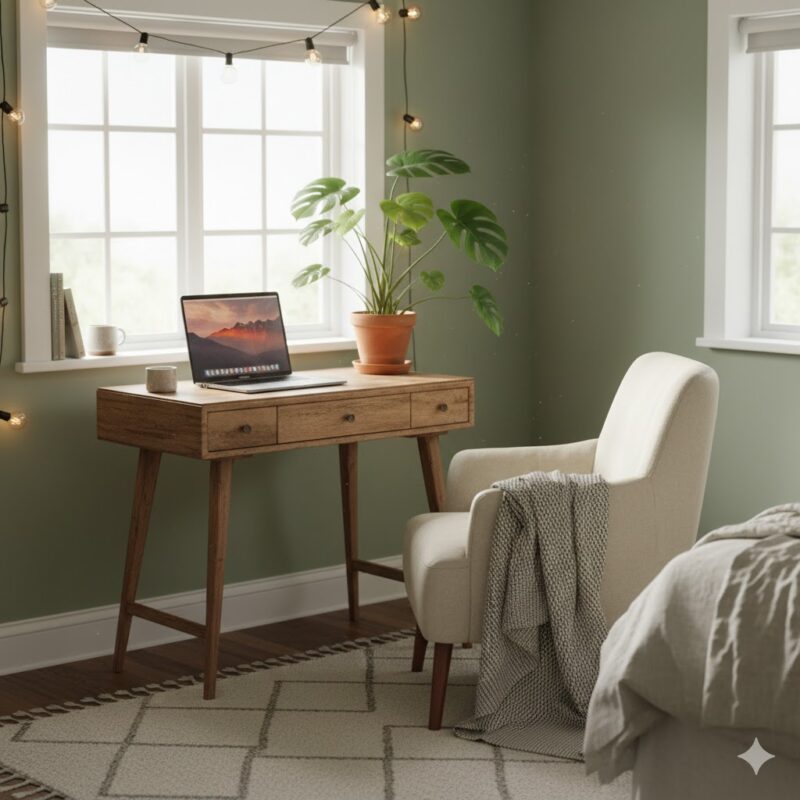
Corners are seriously underrated. You can turn almost any one into a little work zone — no spare room required.
Find a quiet corner that gets decent light. Then add a compact desk (even a console table can do the job) and a chair that doesn’t squeak every time you move. You don’t need fancy; you need functional.
Here’s a trick: use corner shelves above your desk to store supplies. It draws the eye upward, and suddenly your tiny nook looks intentional instead of improvised.
Even a small lamp and plant can make it feel like a real workspace — a tiny sanctuary away from the rest of the chaos.
2. Floating Desks Save the Day
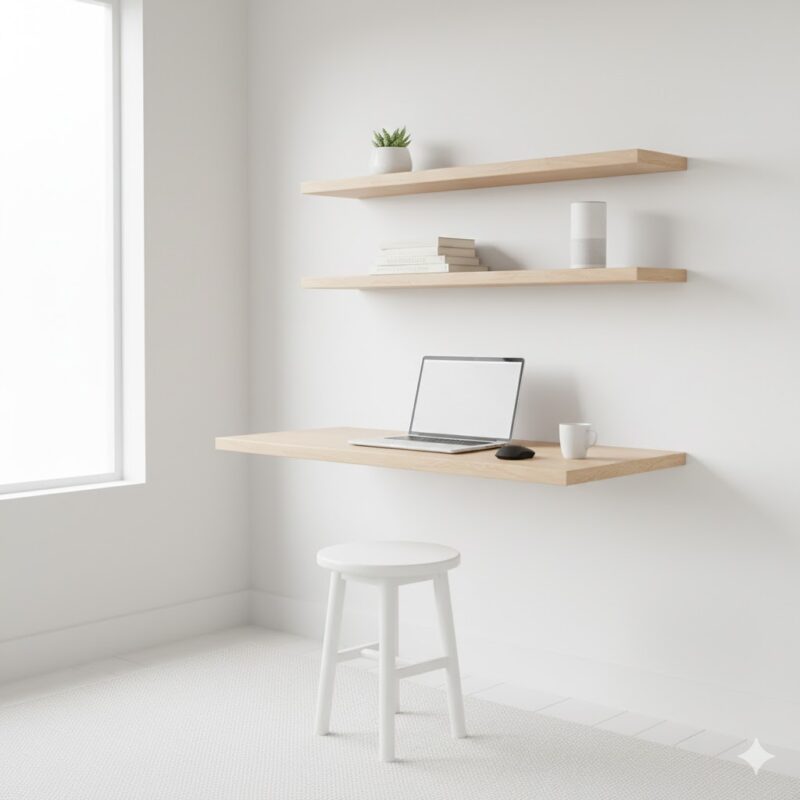
When floor space is tight, go vertical. Floating desks mount directly to the wall, giving you a sturdy surface without eating up square footage.
Some even fold down when you’re done — like a Murphy bed for your laptop. It’s perfect if your “office” doubles as a guest room or living area.
Pair it with a lightweight chair that slides underneath and a couple of wall-mounted shelves. That’s all you need.
If you’re renting, you can get clever alternatives that use tension poles or adhesive wall systems — no drilling required.
3. Keep Your Setup Portable
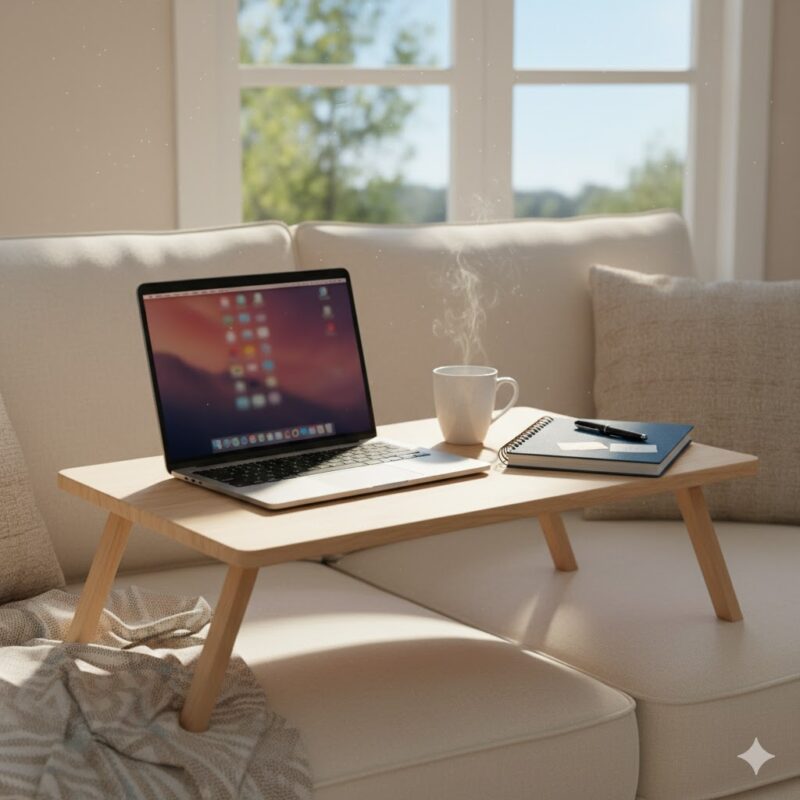
Not everyone can dedicate a full corner, and that’s okay. Portable setups are a lifesaver.
Try a lap desk, rolling cart, or foldable table that can easily move from the bedroom to the balcony. Add a small basket to hold essentials like pens, chargers, and your mouse — so you’re not constantly running around collecting stuff.
It’s kind of freeing, actually. You’re not tied to one spot, but you still have your tools neatly together.
Some people even keep a “work caddy,” like a mobile office in a basket. It’s small, simple, and keeps you from turning the dining table into chaos central.
4. Go for Multi-Use Furniture
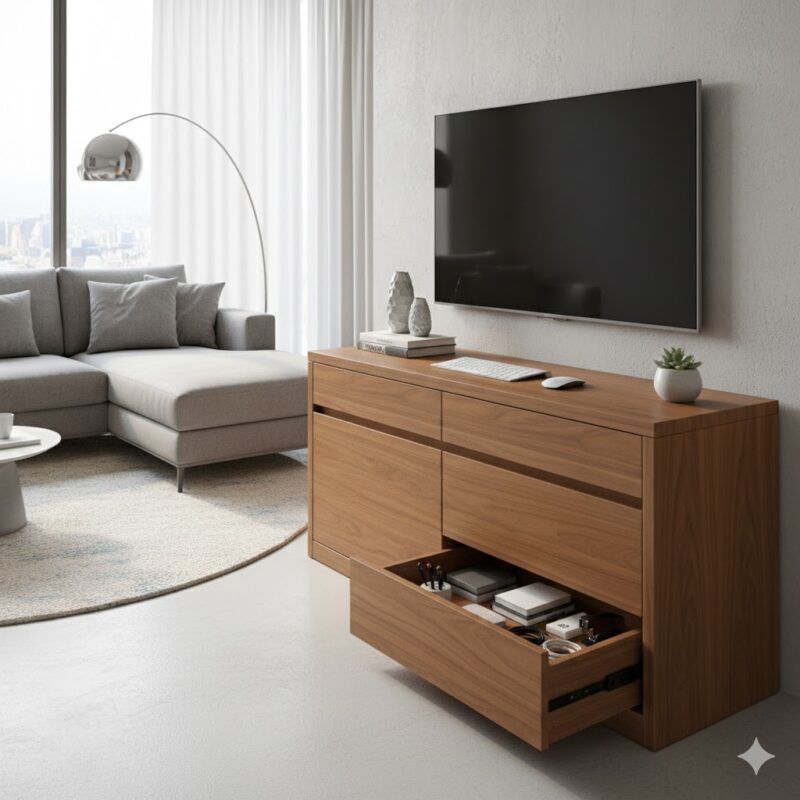
In small spaces, furniture needs to multitask. A console table can be a desk. A storage bench can hold supplies. Even your nightstand might double as a workspace if you plan it right.
One of my favorite setups I saw online was a tiny apartment where the owner used a fold-out wall table as a desk — when guests came over, it turned into a dining surface. Brilliant.
The key is choosing pieces that don’t look too office-y when not in use. That way, your home still feels homey, not like a cubicle that swallowed your living room.
5. Make the Most of Vertical Storage
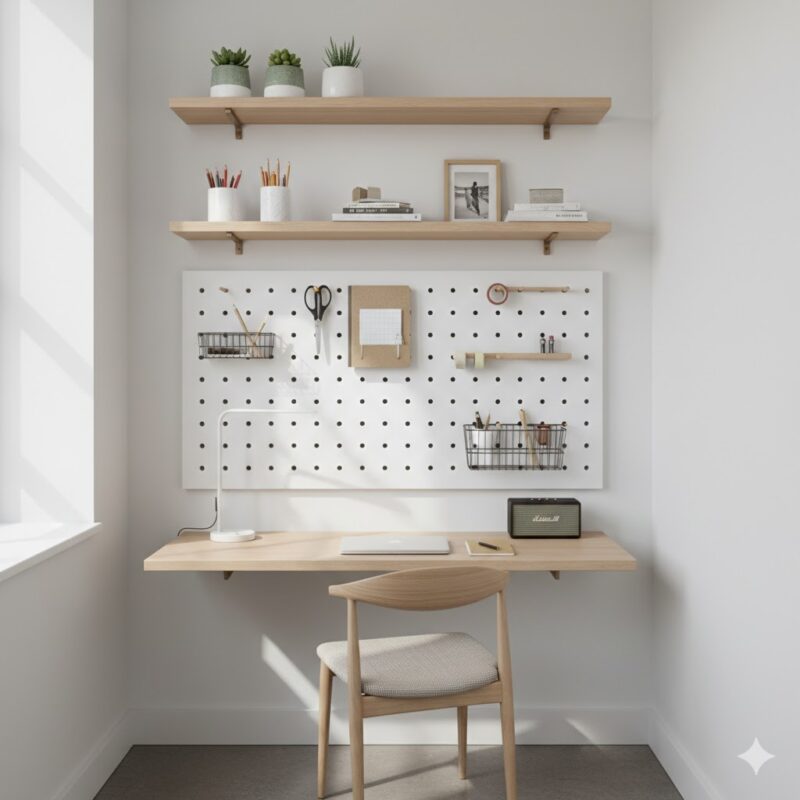
When you can’t expand outwards, expand upwards.
Shelves, pegboards, or hanging organizers make a small space work smarter. A few well-placed vertical storage options keep your desk clear and your essentials handy.
Pegboards are especially flexible — you can hang scissors, notebooks, cables, even plants. They also look cool, which doesn’t hurt.
Don’t overload the wall, though. Keep it simple and symmetrical so it feels neat, not busy.
6. Hide the Clutter (Because It Adds Up Fast)
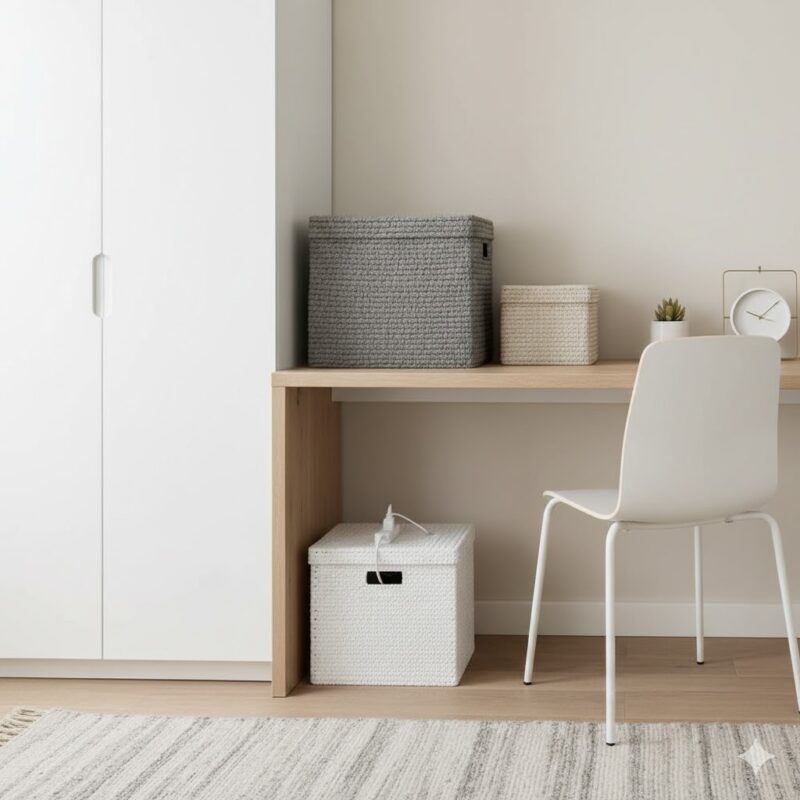
Small offices don’t forgive clutter. One pile of papers and it instantly looks like a tornado hit.
So the trick is hidden storage: boxes, baskets, drawers, or even decorative bins under your desk.
If you’ve got tech gear, use a small cable management box. Label a couple of folders for active vs. archive papers.
It sounds obvious, but once everything has a home, you stop wasting mental energy looking for stuff. And your space just feels bigger.
7. Let Light Do the Heavy Lifting
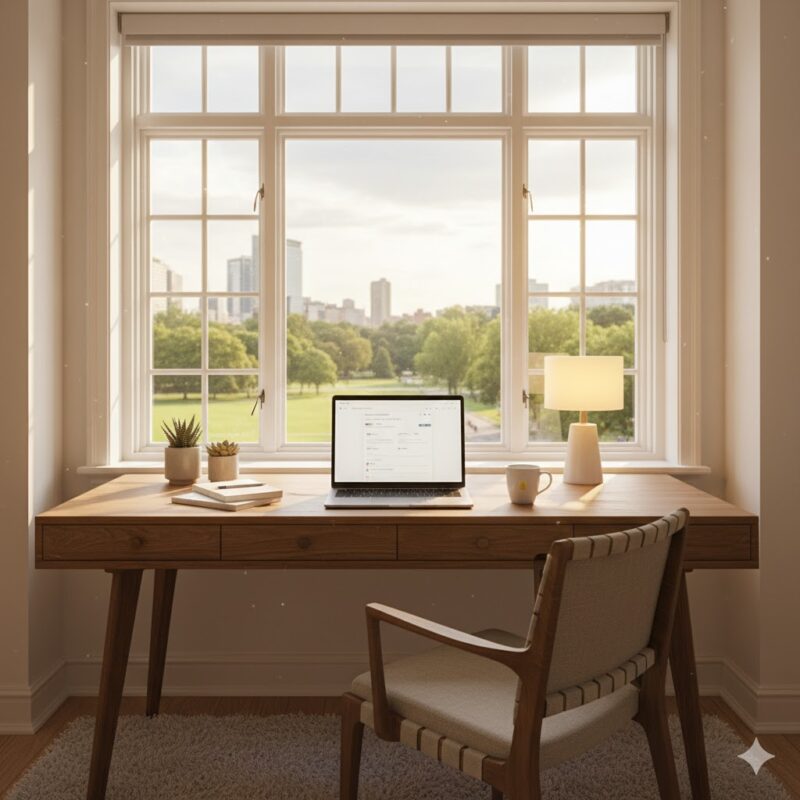
Light is what separates a cramped space from a cozy one.
If you can, position your desk near a window — natural light boosts mood and makes everything look more open. If that’s not possible, go for a warm-toned lamp. Harsh overhead light makes tiny rooms feel colder and smaller.
And mirrors! They bounce light around and trick your brain into thinking there’s more space than there actually is.
Add sheer curtains or blinds to soften glare but keep brightness. It’s one of those subtle design things that instantly upgrades the vibe.
8. Play With Color and Texture
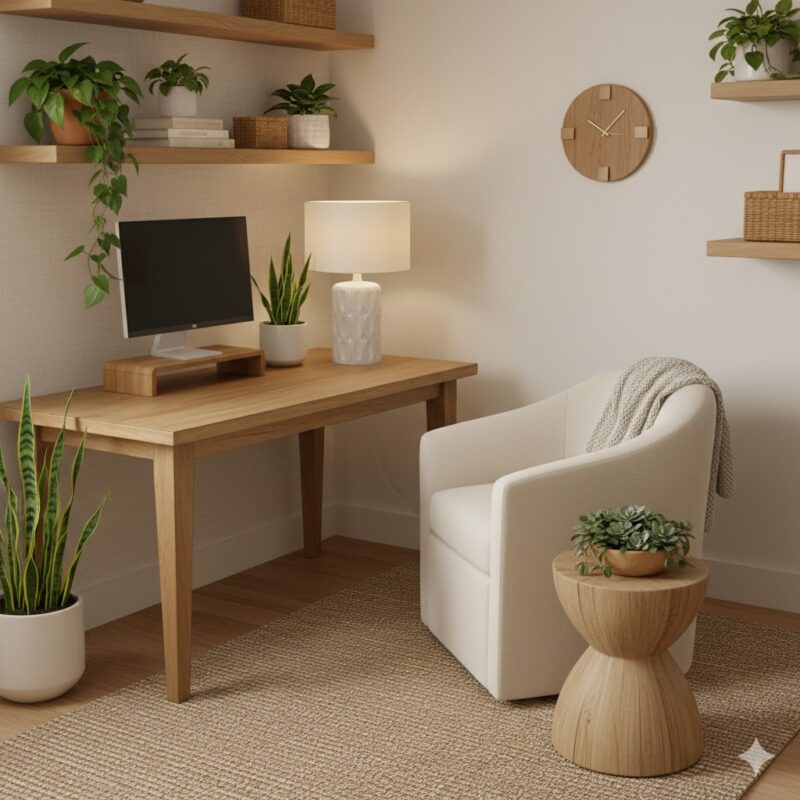
Even if your space is tiny, it can still have personality.
Light colors make rooms feel larger, but don’t be afraid to add contrast — like a navy accent wall behind your desk or textured wallpaper. It adds depth without taking space.
You can also use texture (like woven baskets, linen curtains, or a soft rug) to make things feel warmer and layered.
There’s something psychological about texture that makes small spaces feel less sterile and more lived-in — more “you.”
9. Keep Tech Minimal (Only What You Need)
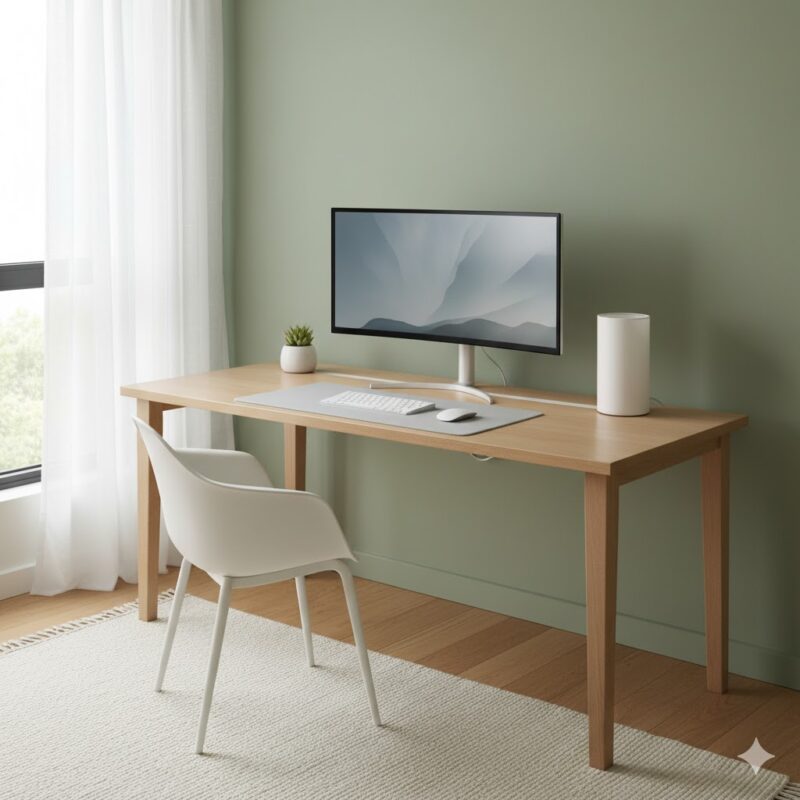
Tech clutter sneaks up fast. Chargers, cables, random gadgets — it’s endless.
In small spaces, less tech equals more peace. Keep your setup light: one monitor, wireless keyboard and mouse, maybe a small speaker if you need sound.
Wireless accessories make the desk cleaner instantly. And once you hide cables (under-desk clips, Velcro ties, or cable sleeves), you’ll wonder how you ever tolerated that spaghetti mess.
Also, unplug or store away things you don’t use daily. Simplicity looks good on everyone.
10. Add a Touch of Green
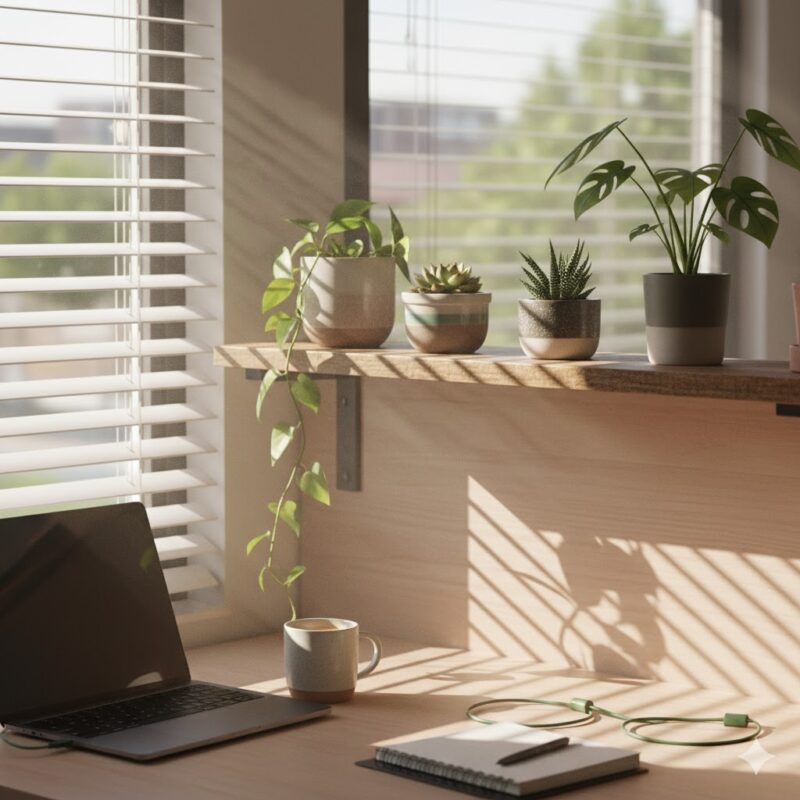
Plants are like magic for small spaces. They add life, color, and softness — even in a cramped setup.
Go for easy-care options like pothos, snake plants, or succulents. They don’t need much attention and they actually clean the air (well, somewhat — scientists debate how much, but it feels fresher anyway).
If you don’t have room on your desk, hang small planters or put a taller plant in the corner.
It’s weird how one little leaf can make your workspace feel like a happy place.
11. Create a Ritual That Defines the Space
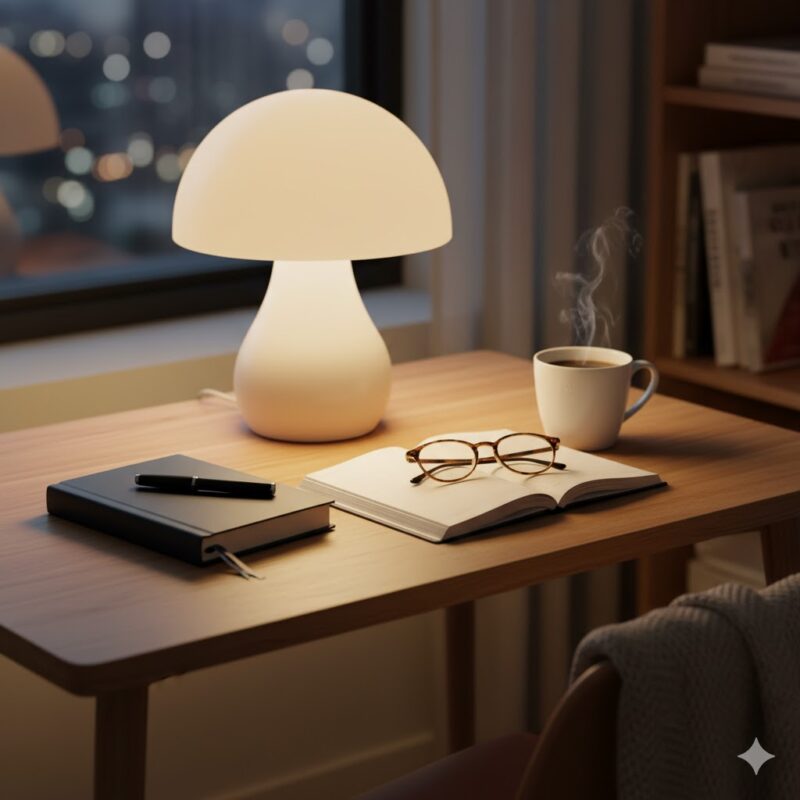
When you don’t have a separate office, boundaries get fuzzy. You’re half-working, half-living in the same square meter.
A small daily ritual helps your brain switch modes. Light a candle when you start working. Play a certain playlist. Close your laptop and clear the desk when you’re done.
That physical cue — even if it’s tiny — tells your brain, “Okay, work’s over.” Otherwise, it’s easy to feel like you never really stop.
I started doing this candle trick a year ago, and now my brain associates that scent with focus. It’s oddly Pavlovian, but hey, it works.
A Few Final Thoughts
Small spaces are challenging, sure, but they’re also opportunities to get creative. A tiny office doesn’t mean you have to compromise on comfort or style — you just have to be smarter about how everything fits together.
And maybe that’s the beauty of it. You’re forced to prioritize what really matters.
So whether your “office” is a floating desk in the hallway or a cozy nook in the living room, make it yours. Keep what serves you. Hide what doesn’t. And make sure there’s always room for a good cup of coffee.